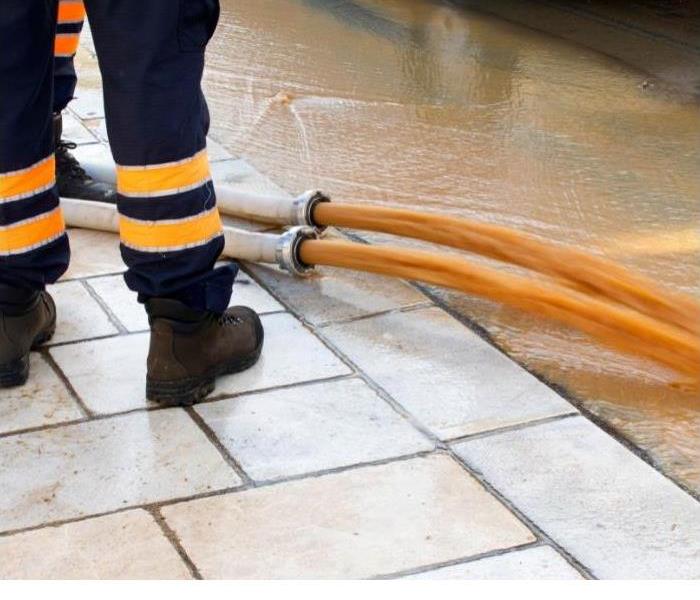The Comprehensive Guide to Flood Damage Restoration: From Prevention to Recovery
8/16/2023 (Permalink)
In an era of unpredictable weather patterns and frequent extreme weather events, understanding flood damage restoration is a necessity for homeowners and property managers alike. When a flood occurs, it's not just the water that causes harm. The aftermath can lead to a host of problems, from structural instability to health risks. However, with the right approach to damage mitigation and recovery, these effects can be managed and even prevented.
Understanding Flood Damage
Flood damage is a destructive force that can devastate homes and businesses. It occurs when excessive water starts to intrude into your property, potentially causing severe structural damage. This water can come from various sources like heavy rains, burst pipes, or sewage backups. A fast response to this intrusion is crucial to minimize the damage.
Preventing Flood Damage
Prevention is always better than cure. By improving home drainage, installing flood barriers, and maintaining your plumbing systems, you can prevent substantial damage. Awareness of local flood patterns and investing in waterproof materials for your home can also be beneficial.
Safety Measures During Flooding
Your safety should be paramount during a flooding event. Always prioritize human life over property. Be sure to have an emergency plan in place, keep track of local weather forecasts, and follow the advice of local authorities.
Immediate Steps After a Flood
Once the floodwaters recede, the first step is to ensure the property is safe to enter. Contact authorities, document the damage for insurance claims, and reach out to a professional flood damage restoration service.
Flood Damage Assessment and Restoration
Professional flood damage assessment is crucial to determine the extent of the damage and plan the restoration process. This typically involves:
- Emergency water removal
- Drying and dehumidification
- Cleaning and sanitizing the affected areas
- Structural drying and repairs as needed
- Mold remediation to prevent health hazards
Dealing with Mold and Mildew After Floods
Floodwaters often lead to mold and mildew growth. Timely detection and removal are essential to prevent potential health risks such as respiratory problems and allergies. A professional restoration service can effectively address this issue.
Here are some steps to deal with mold and mildew after floods:
Safety First
Before entering the affected area, make sure to wear protective gear such as gloves, goggles, and a mask to minimize exposure to mold spores.
Assess the Damage
Inspect the affected areas to determine the extent of the mold and mildew growth. Pay attention to hidden or hard-to-reach spaces like behind walls or under carpets.
Remove Standing Water
Eliminate any remaining standing water from the area using pumps, wet vacuums, or professional water removal services.
Dry the Area
Use dehumidifiers, fans, and open windows to facilitate air circulation and promote drying. It is crucial to remove moisture to prevent further mold growth.
Discard Damaged Items
Dispose of porous materials like carpets, upholstered furniture, and drywall that have been extensively damaged by water and mold. These items are difficult to salvage and can harbor mold spores.
Clean and Disinfect
Thoroughly clean hard surfaces with a mixture of water and detergent. Afterward, disinfect the area with a solution of bleach and water (1 cup of bleach per gallon of water) to kill any remaining mold spores.
Consider Professional Help
If the mold and mildew growth is extensive or if you have underlying health conditions, it may be best to hire a professional mold remediation service.
Navigating Insurance Coverage
Understanding what your insurance covers is key in flood damage situations. Coverage varies, so it's important to read your policy thoroughly and consult with your insurer. Document everything and keep all receipts related to the restoration process.
Choosing the Right Flood Damage Restoration Services
Hiring professional flood damage restoration services can be a big help. Look for a 24/7 service with a quick response time, a good reputation, and plenty of experience with flood damage restoration.
Conclusion
While no one wants to think about dealing with a flood, being prepared and knowing what to do in such a scenario can make a big difference. From understanding the initial steps after a flood to dealing with insurance coverage and choosing the right professional help, having this knowledge can help speed up the recovery process and minimize the stress and impact of such a distressing event.
Remember, your safety is always the priority. Everything else can be restored, rebuilt, or replaced.






 24/7 Emergency Service
24/7 Emergency Service
